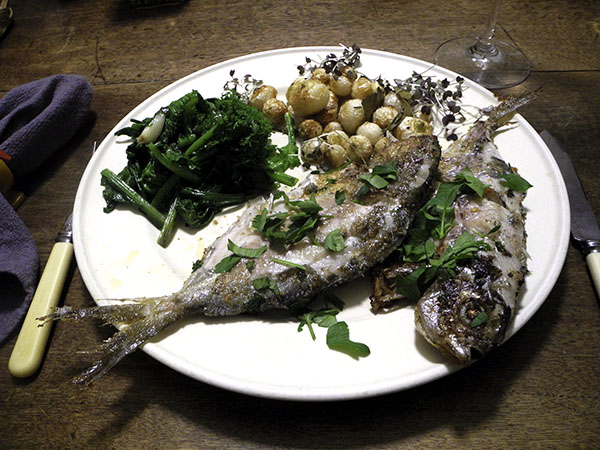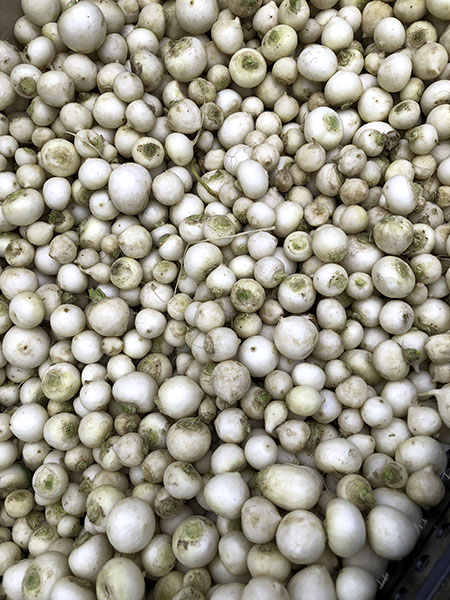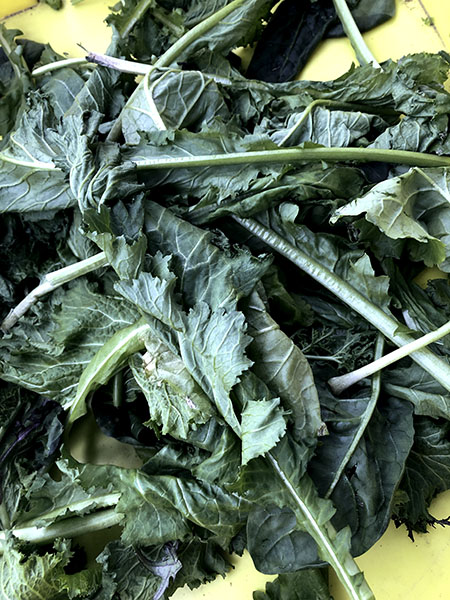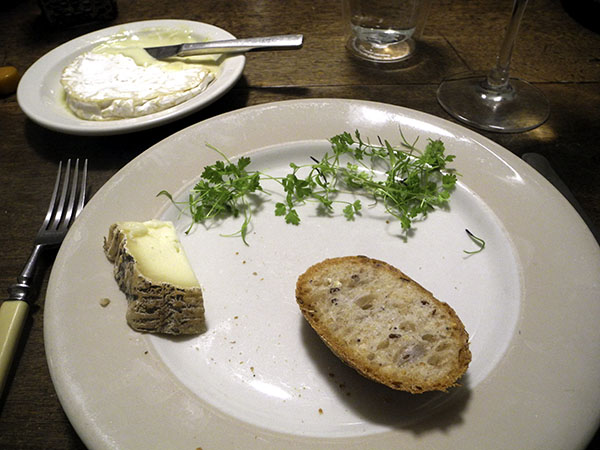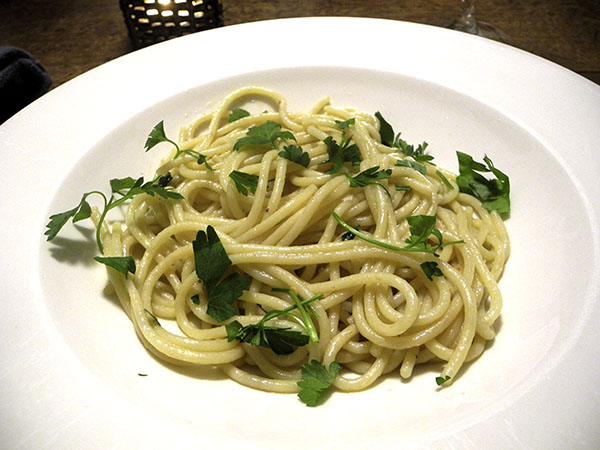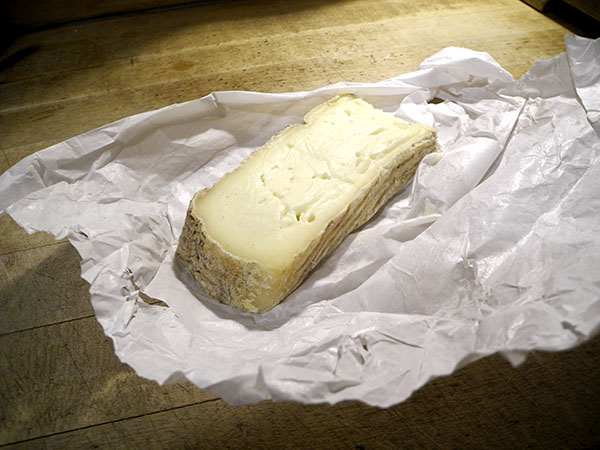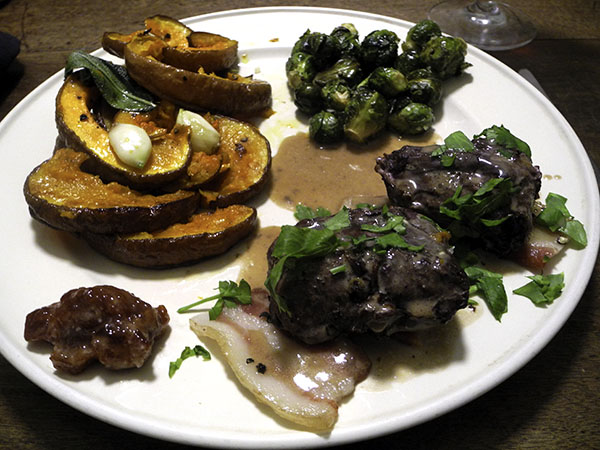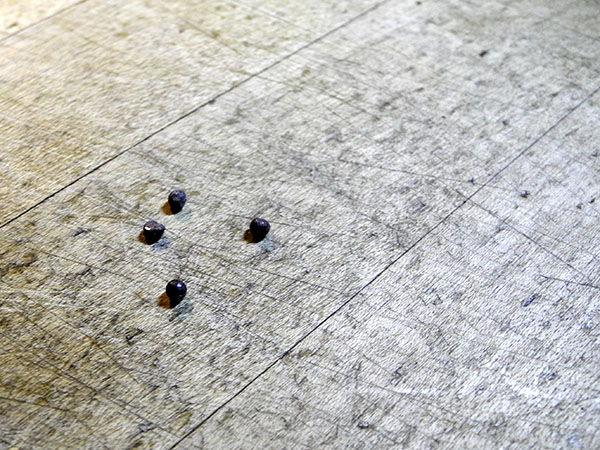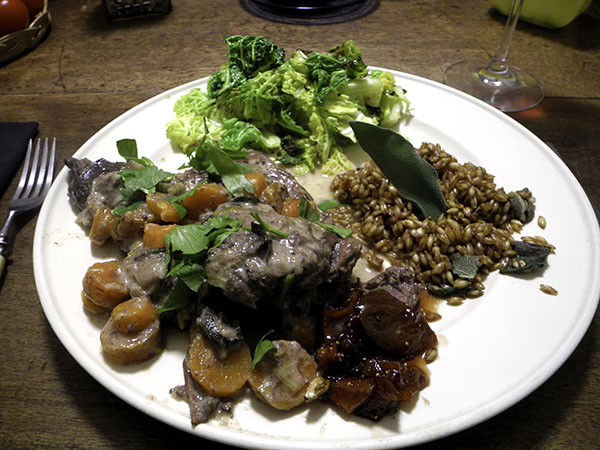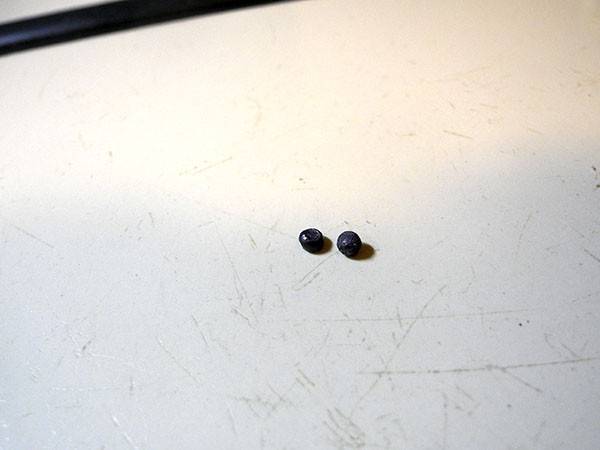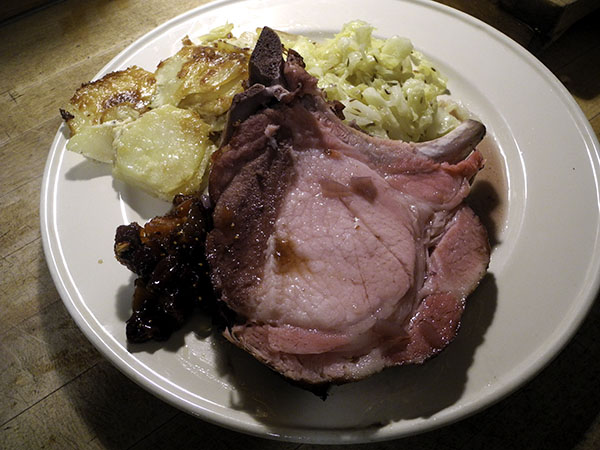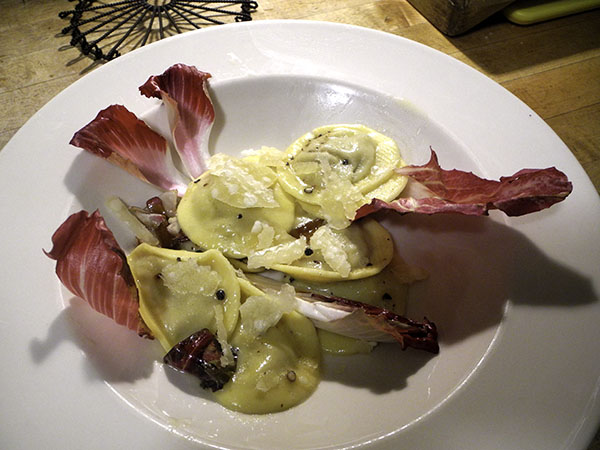
Size didn’t really matter.
Until the package had defrosted, there was no way to tell how many pieces of steak it contained, or, of course, how much each weighed. Those numbers aren’t all important however, at least until it’s time to put the dinner on the 2 plates, when questions of aesthetics and fair apportioning arise.
As it turned out, the package held 3 pieces of sirloin cap (aka coulotte/culotte/picanha), each a different size. We would be 2 at the table that evening, so my solution to ensure portion fairness was to cut them all into halves, and then juggle them to see that each trio weighed the same.
The steak was delicious, and we each had our (modest) fair share, so aesthetics be damned, although the presentation doesn’t look half bad in the picture above.
- three pieces of sirloin cap steak from Sun Fed Beef in the Union Square Greenmarket, weighing approximately 13 ounces together, each divided into 2 pieces because they were all very different in weight, brought to room temperature, seasoned on all sides with sea salt and freshly-ground black pepper, seared for less than a minute on the top, thick, fat-covered sides inside a dry oval enameled heavy cast iron pan, the 2 long sides cooked for 2 or 3 minutes each, then removed from the pan the moment they had become perfectly medium-rare and arranged on 2 warm plates, topped with a pat of ramp butter (a leftover, frozen, from some made for a much earlier meal), the steaks allowed to rest for about 3 minutes before being served

- a generous mix of mostly red Kyoto carrots (pictured above) and some more familiar loose orange carrots of the same size, both from Norwich Meadows Farm, scrubbed, dried, sliced once lengthwise, rolled inside a large unglazed ceramic Pampered Chef oven pan with a little olive oil, salt, black pepper, more than half of a teaspoon of crushed Italian fennel seed, and a bit of crushed dried habanada pepper, roasted at 400º for about 30 minutes, or until tender, arranged on the plates and garnished with micro chervil from Two Guys from Woodbridge
- a few small Brussels sprouts from Migliorelli Farm, the last of a supply purchased late in December (Brussels sprouts are one more member of the terrific huge mustard family (Brassicaceae) that’s such a great boon for cooks in the winter), washed, trimmed pretty intensely by hand, and dried, tossed inside a bowl with a little olive oil, salt, and black pepper, plus a bit of dried peperoncino Calabresi secchi, then roasted inside a small unglazed seasoned Pampered Chef pan, a medium size this time, until the sprouts were slightly brown and crisp on the outside
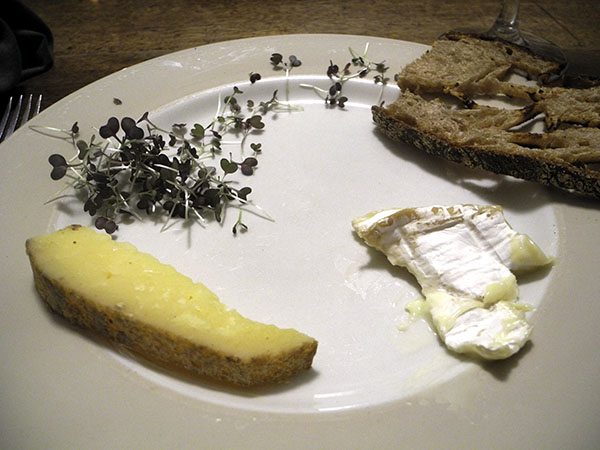
There was a cheese course.
- two cheeses, an Ardith Mae Farmstead, Columbia County, NY, camembert-style using 2 milks (goat from their own farm and cow from that of a neighbor, Liz Baldwin’s Shunpike Dairy) and an Eastern Connecticut cows milk, Cato Corner Farm Dairyere Reserve (aged one year)
- a garnish of micro red mustard from Two Guys from Woodbridge
- slices of a nutty whole wheat She Wolf Bakery miche from the bakers’ strand in the Union Square Greenmarket
- dried Calabrian (Amantea) figs from Buon Italia in the Chelsea Market
- the wine throughout was an Argentinian (Luján de Cuyo/Mendoza Province) red, Bodega Norton, D.O.C Malbec 2015, from Flatiron Wines
- the music throughout was Puccini’s 1896 opera, ‘La Bohème’, Bertrand de Billy conducting the Symphonieorchester des Bayerischen Rundfunks and the Chor des Bayerischen Rundfunks, with soloists Anna Netrebko, Rolando Villazón, Boaz Daniel, Nicole Cabell, Stéphane Degout, and Vitalij Kowaljow [after two succeeding evenings with extremely popular operas, first ‘La Traviata’, and now ‘La Bohème’, I wouldn’t be surprised if some of our friends will be asking themselves, “Are those two all right?”]
